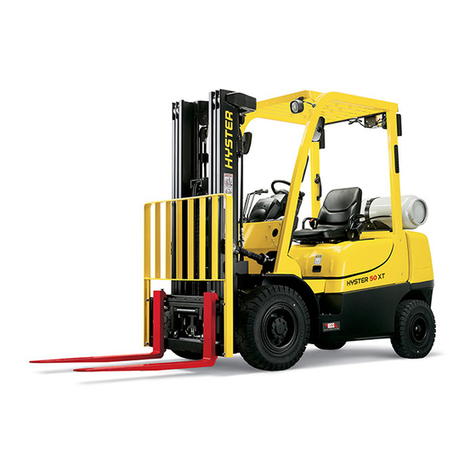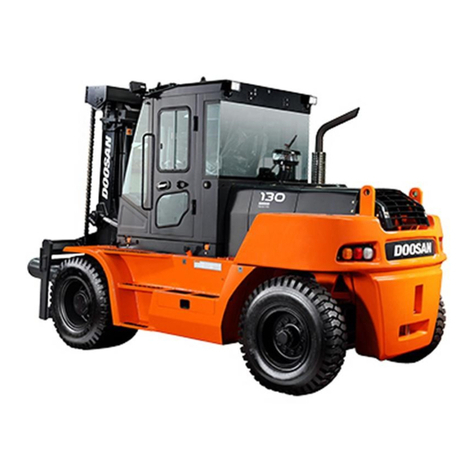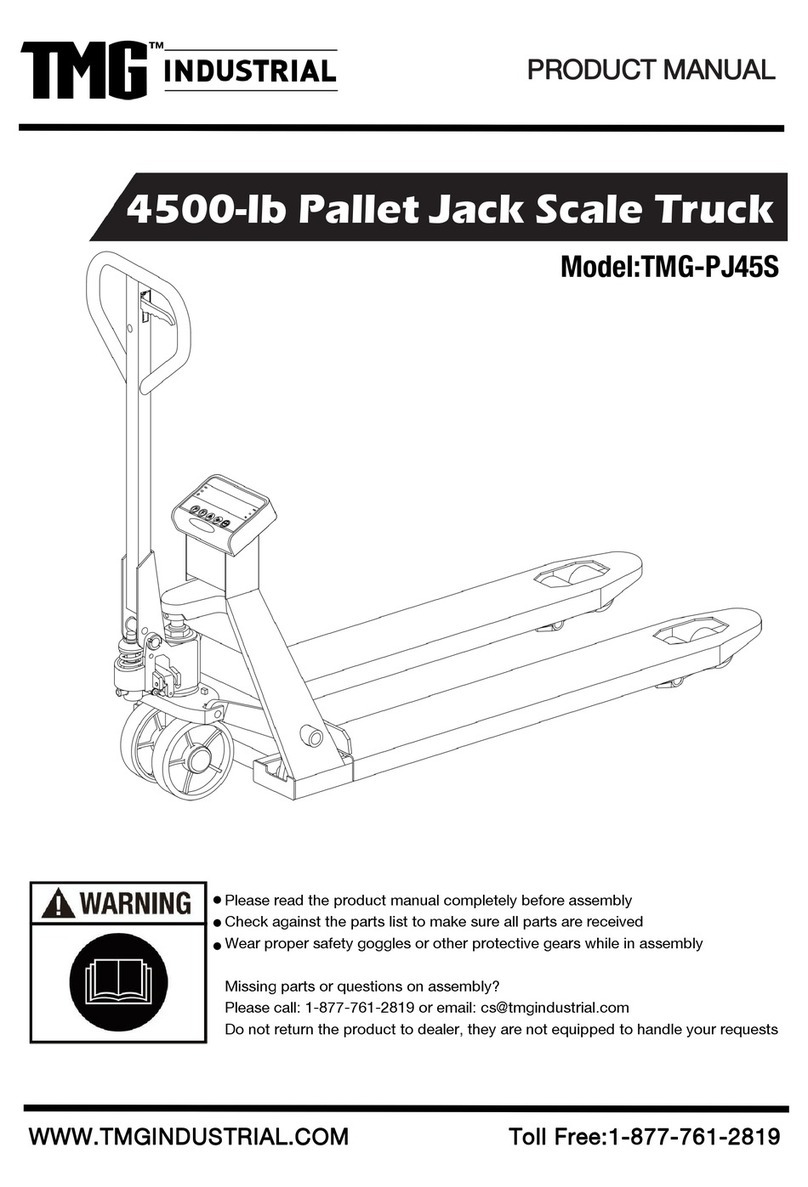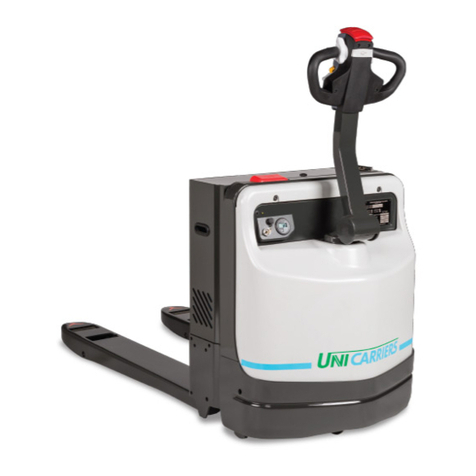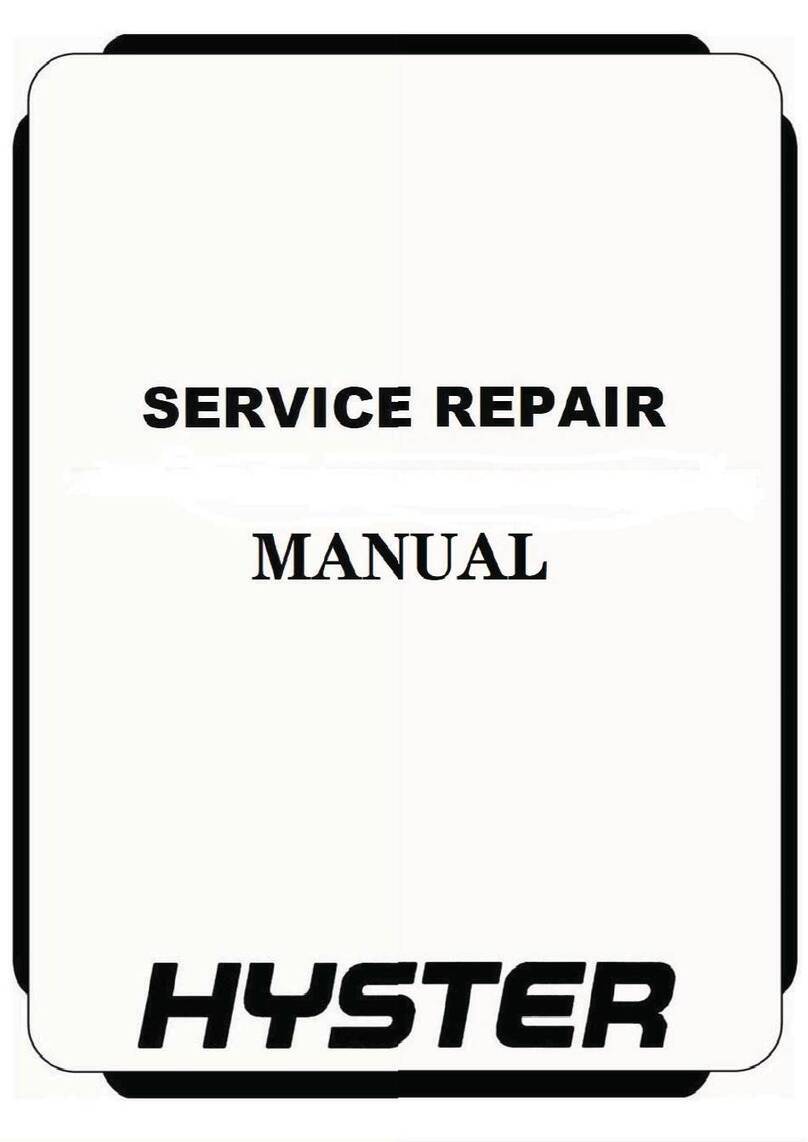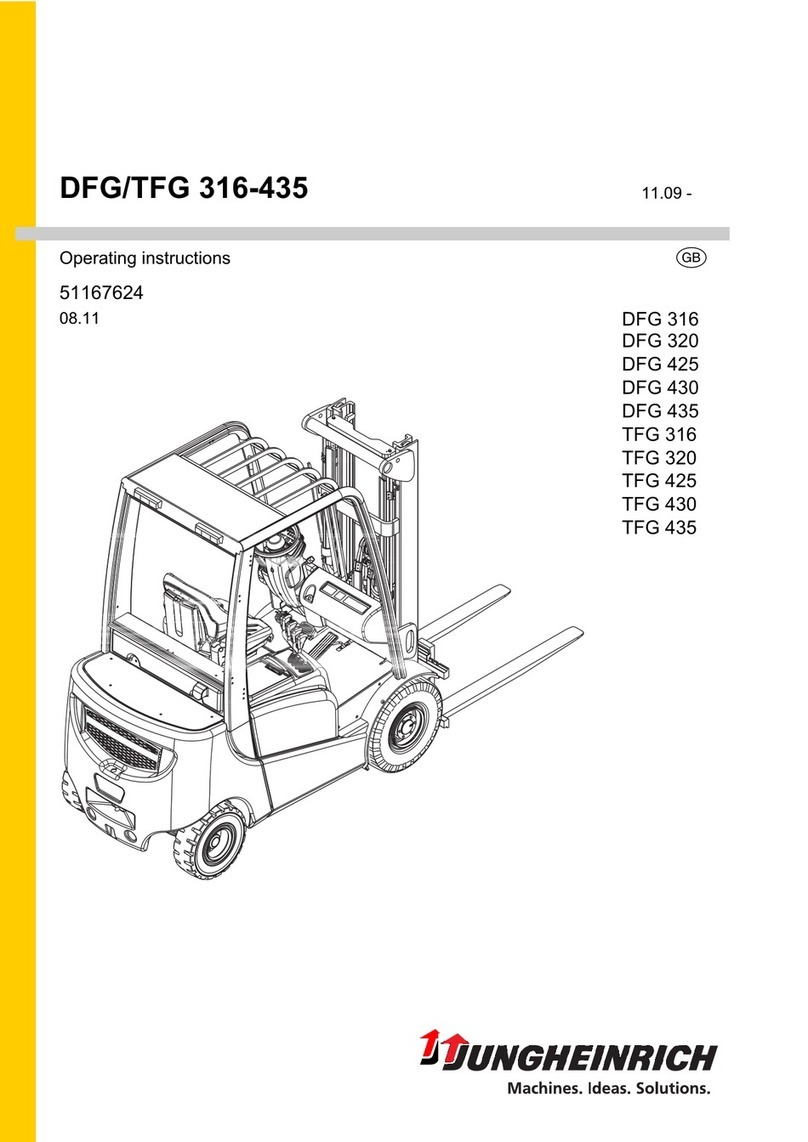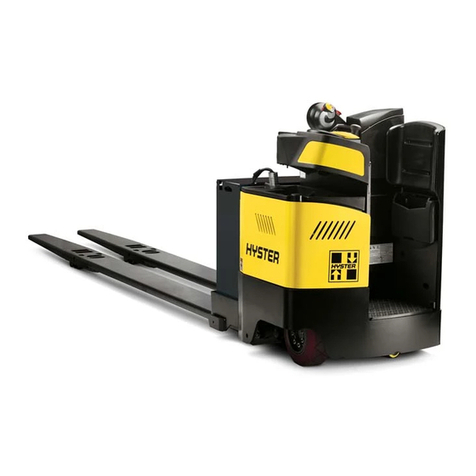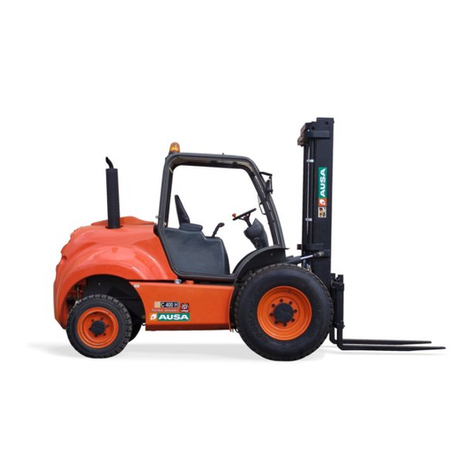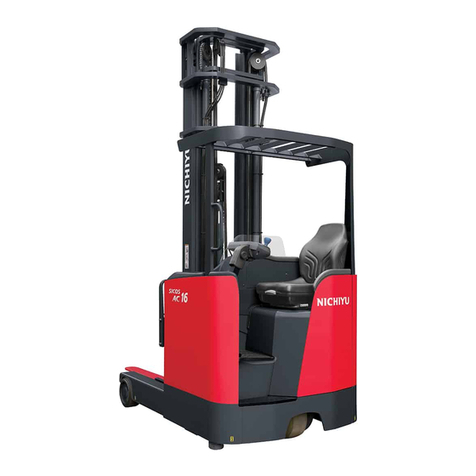BOMAQ MP Series User manual

Operator's Manual Rev. BXXMP.01 January 2020
1/34 BOMAQ I DUSTRIES SLU MODEL BXX MP

Operator's Manual Rev. BXXMP.01 January 2020
IMPORTANT
Read, understand and obey these safety rules and operating
instructions before operating the machine. Only trained and
qualified personnel shall be authorized to operate the machine.
This manual shall be kept with the machine at all times.
Due to continuous development on the quality of the product,
changes may apply to this manual. Please, ask the manufacturer
to have the latest updates.
For any further information, please contact Bomaq.
CONTACT
BOMAQ INDUSTRIES, S.L.U.
POLÍGO O I DUSTRIAL LA ESTRELLA
C/ALDEBARÁ 47 - P.C. 30500
MOLI A DE SEGURA - MURCIA
SPAI
Telephone +34 968 676 221
Email inf[email protected]
© Copyri ht 2020 BOMAQ INDUSTRIES S.L.U.
All ri hts reserved
CONTENTS
Introduction ............................................................ Page 3
Machine identification ............................................ Page 3
Labels used in the machine ..................................... Page 4
Safety precautions .................................................. Page 4
Description of the main components ..................... Page 12
Controls and instruments ........................................ Page 14
Inspections .............................................................. Page 17
Operating instructions ............................................ Page 20
Transporting the machine ....................................... Page 25
Maintenance ........................................................... Page 28
Faults and troubleshooting ..................................... Page 33
Specifications .......................................................... Page 34
2/34 BOMAQ I DUSTRIES SLU MODEL BXX MP

Operator's Manual Rev. BXXMP.01 January 2020
INTRODUCTION
Thank you for the acquisition of your new Bomaq B30 MP, we
really hope this unit will cover all your expectations, and will
help you to carry out all the jobs you may need in your lifting
activity.
Throughout this Operator's Manual, you will discover all the
aspects related with the operation of this unit. In case you don't
find the information you need, you can contact us, and we will
immediately send you the required information.
Please, take your time to read and understand this Manual
before operating the unit, to be able to do it in a safe way.
All the measures and weights expressed in this manual are in
the metric system. If needed, ask for a different system to our
after-sales department.
MACHINE IDENTIFICATION
All our units are identified by a code, located on the plate on the
left side of the driver, inside the cabin.
This code is composed of several sections, which indicate model,
version and production counter.
In this case for example, we have B30-B-26-0714:
B30 is the model
B is the version of machine
26 is the counter for production
0714 is month/year of assembly init: July 2014
If you need support or parts allocation, you must write down
this code, and include it in any inquiry, so we are sure you are
taking the appropriate support or parts for your unit.
On the other hand, there is a plate indicating the model, weight
and mast type & height, to identify the machine model and
lifting capacity. In this plate you'll find also information about
maximum weight capacities.
The forklift has another serial number stamped on the mast. It is
located in the front profiles, and it is also important when asking
for parts of the mast (rollers, chains, ...).
3/34 BOMAQ I DUSTRIES SLU MODEL BXX MP

Operator's Manual Rev. BXXMP.01 January 2020
LABELS USED IN THE MACHINE
Here we have a list of the symbols used, and their meaning:
LABEL MEANING LOCATION
Risk of hand
injury Mast
Fasten seat belt Dashboard
Use diesel only Diesel tank
In case of
overturn don't get
out of the Cabin
Dashboard
Be careful with
rotating arts Engine cooler
SAFETY PRECAUTIONS
GENERAL OBSERVATIONS
This forklift has been designed in accordance with the provisions
of section 1.1.2 “Principles of safety integration” of point 1
“Essential health and safety requirements” of annex I of
Directive 2006/42/EC on the approximation of the laws of
Member states relating to machinery.
Most accidents involving forklifts and their maintenance or
repair are the result of not complying with the most basic safety
precautions.
It is therefore necessary to always be aware of potential risks
that could arise as a result of operating the forklifts, paying
constant attention to the effects that each action performed
could have.
Being aware of potentially dangerous situations could
prevent an accident.
CONDITIONS TO BE MET BY OPERATORS
The person that usually operates the forklift must meet the
following conditions:
Medical:
Before operating the forklift and during operation, the operator
must not consume alcoholic beverages, drugs or any other
substances that could impair his or her psychological and
physical condition and consequently the ability to drive the
forklift.
Physical:
The operator must have good eyesight, good hearing, good
coordination and the ability to safely perform the functions
needed to operate the forklift as specified in this manual.
Mental:
The ability to understand and apply established safety
standards, rules and precautions; the operator must be alert and
use good judgment for his or her own safety and that of others
and the operator must make every effort to do the work
correctly and responsibly.
4/34 BOMAQ I DUSTRIES SLU MODEL BXX MP

Operator's Manual Rev. BXXMP.01 January 2020
Trainin :
The operator must have carefully read and studied this manual,
the attached charts and diagrams and the warning and hazard
stickers; he or she must be specialized and competent in all
aspects regarding operation and use of the forklift. In many
countries training and licensing must conform and local
authority requirements.
RESIDUAL RISKS
Although BOMAQ I DUSTRIES S.L.U. has made every possible
effort to ensure this forklift's safety by way of its design and
manufacture, it considers that residual risks may occur as a
result of the operator's actions during operation.
Some examples are given below:
-Risks due to working or driving too fast for the loading
conditions or the area of operation.
-Risks due to using incorrect methods for checking or replacing a
hydraulic valve (residual pressure not discharged – uncontrolled
movements).
-Risks due to using incorrect methods for disassembling parts,
such as cylinders without having secured moving parts correctly
(risk of the moving part accidentally falling).
-Risks due to the forklift accidentally overturning without the
operator using the seat belt.
NOISE EMISSIONS AND VIBRATIONS
All BOMAQ forklifts have a guaranteed sound power level
according to Directive 2000/14/EC of the European Parliament
and of the Council on the approximation of the laws of the
Member States relating to the noise emission in the
environment by equipment for use outdoors.
In accordance with the provisions of E 12053 and E -ISO 4871,
the emission sound pressure level at the operator's position, for
a complete operational cycle, is below 80 dB.
Noise measurements have been taken under the
following operating conditions: idling, lifting and
movement.
The vibration level to which the operator's body is exposed has
been measured using representative and technically comparable
forklifts as indicated in E 14253:2004, Royal Decree 1311/2005
and Royal Decree 1311/2005 Technical Guidelines in order to
minimize risks for the operator.
These measurements have been taken by an authorized control
body with the forklift in motion and values not exceeding 0.74
have been obtained.
Any arbitrary modification to the forklift causes the sound
power values to vary.
DESCRIPTION AND SAFETY DEVICES
All BOMAQ forklifts have all of the means necessary to
guarantee their safe use.
In designing these forklifts, all possible risks have been taken
into account. As such, covers and guards have been fitted to
protect the operator from any hazards that may be encountered
during operation of the forklift, such as becoming trapped in the
engines and moving parts of the transmission, electrical system,
etc.
If the safety covers and guards are removed (which is only
authori ed during maintenance), they should be refitted
as soon as the repair is completed.
The forklift has an emergency stop button located next to the
hydraulic controls and the corresponding risk indicator
diagrams.
Emer ency stop: the emergency stop is located on the right-
hand side of the operator, next to the hydraulic control joysticks.
It automatically brings the engine to a halt in the event of an
emergency or problem. On those vehicles fitted with a negative
brake, this will come on when the emergency stop button is
pushed.
It is important to remember to release the emergency
stop button after trying to start the engine again,
otherwise you can run out the battery.
5/34 BOMAQ I DUSTRIES SLU MODEL BXX MP

Operator's Manual Rev. BXXMP.01 January 2020
Safety cabin: this robust element protects the driver in the
event of the load falling off of the forks or the forklift
overturning. Type-approved driving cab in compliance with
standards ISO 3449 and E 13510 (ROPS and FOPS).
Fork carria e: this is a rigid element located on the front of the
mast which moves along with the load platform. It increases the
support surface of the loads, preventing them from falling on
top of the operator.
Bonnet: protects the engine from any unauthorized handling.
Chassis: the forklift is totally protected to prevent any contact
with the electrical circuits, tyres, etc.
Acoustic warnin alarm: when the forklift is moving in reverse,
an audible signal is activated.
Seat belt: located on the seat and worn by the operator.
Wearing the seat belt is compulsory to prevent serious
injury in the event of an accident.
Key: locking device that prevents any unauthorized persons
from using the vehicle.
Si nalin beacon: light indicating that the forklift is running. It is
located on top of the rear of the cabin.
SAFETY RECOMMENDATIONS
The driver of any motorized industrial forklift must be at least 18
years of age and be expressly assigned by the company. They
will also have to be trained and licensed as required by local
authorities.
Make sure that new operators are trained, monitored and
assisted by expert staff who are qualified to operate
forklifts.
Anyone who fails to meet these requirements should not be
allowed to drive a forklift truck, of any type.
The driver must be aware that, in addition to those
accidents that he or she may suffer, the equipment that
they are operating can cause injury to other people if all
of the safety rules are not carefully followed.
It is not the forklift truck in itself that is dangerous but rather the
6/34 BOMAQ I DUSTRIES SLU MODEL BXX MP

Operator's Manual Rev. BXXMP.01 January 2020
way in which it is used. On using this type of equipment, hazards
similar to those present when driving other vehicles may occur:
bumps, impacts, turning over, trapped limbs, etc.
Some safety considerations that must be followed are listed
below:
-Never exceed the forklift's load capacity. Failure to follow this
rule may cause the vehicle to overturn, risking injury to both the
driver and to his or her colleagues. See load diagrams on the
forklift for this purpose.
-Do not, under any circumstances, increase the wei ht of the
counterwei ht by addin additional loads, especially by having
people climb onto the vehicle. If the load capacity of the forklift
is never exceeded, resorting to such tricks will never be
necessary.
-Do not use two forklifts simultaneously to move heavy or very
large loads as this is a dangerous operation that requires very
special precautions. This should only be attempted in
exceptional circumstances and under the supervision of the
head maintenance technician.
-To lift a load safely, fully insert the forks underneath the load,
lift the load slightly and immediately tilt the mast backwards.
-Before drivin , check that the load is balanced and secure on
its support. Whenever the forklift is laden, keep the forks
lowered and with the load tilted back towards the driver. This
will ensure greater stability.
-Before undertaking any maneuver, check that there is nobody
in the immediate vicinity of the forklift, especially when
reversing.
-When raising or lowering the forks, the driver must make sure
his or her hands or feet, or those of any colleague, cannot
become trapped.
-Do not point the forks towards people workin close to walls
or boxes.
-Nobody should stand or walk under the raised forks, even
when the vehicle is unladen.
-Never leave the forklift with a raised load.
7/34 BOMAQ I DUSTRIES SLU MODEL BXX MP

Operator's Manual Rev. BXXMP.01 January 2020
RULES ON DRIVING THE FORKLIFT
-Do not allow yourself to become distracted from the task of
driving.
-Look in the direction in which the vehicle is moving,
maintaining good visibility at all times.
-Drive at a reasonable speed, according to the load.
-Avoid accelerating, changing direction or stopping suddenly.
-Take all turns at a low speed, using the horn to warn anyone
nearby.
-Indicate each maneuver that is to be carried out with sufficient
advance warning.
-Use the horn when approaching bridges, crossroads,
pedestrians, animals, etc.
If the si e of the load prevents good forward visibility, the
driver should proceed in reverse.
-Drive slowly over any wet, slippery or uneven terrain.
-Brake progressively, not sharply.
-Respect the signs and driving rules established by the company.
-Only follow the set routes.
-The forklift truck must not be used to carry passengers. The
driver will be held responsible for any consequences resulting
from failing to obey this rule.
-Do not drive with the load in the raised position since doing so
would greatly decrease the stability of the vehicle. The load
should always be carried in the lowest possible position.
-With platform forklifts, the vehicle should be driven with the
load in front. The platform operator would then not be crushed
in the event of a fall.
-Whenever driving with the vehicle unladen, the forks should be
kept at around 15 cm from the ground.
-Take special care with loads when passing under bridges or
through doorways.
-If it is necessary to drive on slopes, proceed forwards when
going up and in reverse when going down. Do not turn on a
slope.
-Stacks of material should be placed tidily and safely. If stacking
reels, remember that they can roll around. Pay attention to
where they are left and make sure they are secured using
wedges.
-Do not use the forklift to push other vehicles. If it is necessary
to tow another vehicle, this must be done using a rigid bar at a
very low speed.
8/34 BOMAQ I DUSTRIES SLU MODEL BXX MP

Operator's Manual Rev. BXXMP.01 January 2020
-Make sure that the combined weight of the forklift and the
transported goods does not exceed the maximum load capacity
for the terrain.
-Before driving onto walkways, platforms, gangways, etc., make
sure that they can bear the weight of the vehicle.
-When driving behind another vehicle, maintain a distance equal
to approximately three times the length of the forklift. This will
help prevent accidents in the event that the other vehicle needs
to brake suddenly.
-When passing through narrow passages, the driver must take
care that his or her head, arms and legs do not stick out past the
width of the vehicle.
-When tilting the forks or the back-plate forwards, the stability
of the vehicle is reduced. When it is necessary to put down a
load using these mechanisms, do not lift it any higher than
necessary and, when lowering, do so slowly.
-Tin and sheet metal containers can break and shoot out at
nearby co-workers. Avoid accelerating or braking sharply, as well
as turning at speed.
-If during the course of a job it is necessary to stop, unless said
stop is for a very short period of time, the engine should always
be turned off.
AT THE END OF THE DAY
-At the end of the working day, the forklift should be parked in
the place specifically set aside for this purpose, where it will be
protected from the elements.
-When parking the forklift, the engine should be turned off, the
parking brake applied, the battery disconnected and the key
removed from the ignition.
-The forks should be left in the lowest possible position resting
on the ground.
-The forklift should always be parked on level ground. If for any
exceptional reason it is necessary to leave it parked on a slope,
the wheels must be carefully blocked using wedges and the
parking brake applied.
-The driver must not make any repairs or adjustments to the
forklift. Any anomaly observed during work, no matter how
small, must be duly reported to a senior member of staff.
-The operator must never stand between the mast and the
overhead guard of the forklift. If it is necessary to do so, lock all
controls to prevent any unexpected movement of the mast.
GENERAL SAFETY MEASURES REGARDING THE ENGINE
This section indicates the basic safety precautions that must be
followed. Read and make sure you fully understand the basic
precautions that appear in this section before operating,
lubricating, carrying out maintenance on or repairing this
product.
The operator in charge of engine maintenance must observe the
following safety recommendations:
-Make sure that all warning stickers are clearly legible. Clean or
replace any stickers that cannot easily be read or that have
illustrations that cannot be seen.
-Do not wear any clothing or jewelery that could become
trapped in or wrapped around the controls or any parts of the
engine.
-Make sure that all guards and covers are correctly fitted on the
engine.
-Keep the engine free from foreign materials. Remove any
rubbish, oil, tools and other items from the walkways and from
the steps.
9/34 BOMAQ I DUSTRIES SLU MODEL BXX MP

Operator's Manual Rev. BXXMP.01 January 2020
- ever store maintenance fluids in glass containers. Drain all
liquids into a suitable container.
-Do not disassemble any component or part of the hydraulic
system without having first released the pressure from the
system. Failure to do so could result in injury.
-Do not touch any part of the engine whilst it is running. Allow
the engine to cool before carrying out any maintenance work on
it.
-The electrolyte is an acid and may cause personal injury. Do not
allow the electrolyte to come into contact with skin or eyes.
Always wear protective goggles when servicing the batteries.
Wash your hands after touching the batteries or the connectors.
The use of gloves is recommended.
-Do not smoke whilst filling the fuel tank.
-Do not carry out any welding on pipes or tanks that contain
flammable liquids.
-Do not bend pressurized pipes. Do not hit pressurized pipes. Do
not install pipes that are bent or damaged.
-Do not place any objects near the moving fan blades. The fan
blades will launch or cut any objects that touch them. Wear
protective goggles to prevent possible eye injuries caused by
flying objects.
-Clean up any spilled fuel.
-Any materials that have been splashed with fuel should be set
aside at a safe distance.
-Turn off the engine before starting any cleaning or adjustments
and while adding or checking fuel and lubricants.
-Do not make any kind of adjustment without first learning how
to do so correctly.
-Make sure that the engine is not started in any location where
doing so could lead to a high concentration of toxic emissions.
-Keep other people at a safe distance whilst either the engine or
any auxiliary equipment is running.
-Keep loose clothing and long hair away from moving parts.
-Keep away from moving parts when the engine is running.
Some moving parts are not visible when the engine is
running.
-Do not start the engine if any of the safety guards have been
removed.
-Do not remove the filler cap or any component of the cooling
system whilst the engine is hot and the coolant is under
pressure. Doing so could cause dangerous hot coolant to
overflow.
-Do not allow any sparks or naked flames near the batteries
(especially during the battery recharging process). The gases
given off by the electrolyte are highly flammable. The battery
fluid is harmful to the skin and especially to the eyes.
-There should only be one person at the engine controls.
-Make sure that the engine is only controlled from the control
panel or from the operator's seat.
-If the pressurized fuel comes into contact with anyone's skin,
seek medical attention immediately.
-Fuel and oil (especially used oil) can be harmful to some
people's skin. Wear protective gloves or use a special protective
solution for the skin.
Before working on pressuri ed lines (hydraulic oil,
compressed air) and/or disconnecting hydraulic elements,
make sure the line is not pressuri ed and no longer
contains hot fluid.
10/34 BOMAQ I DUSTRIES SLU MODEL BXX MP

Operator's Manual Rev. BXXMP.01 January 2020
-Do not wear clothing that has been stained with lubricant. Do
not put materials that have been stained with oil in your
pockets.
-Dispose of used lubricant in accordance with local
environmental pollution regulations.
-The material used to make some of the engine components
(some of the seals, for example) can be extremely dangerous if
burned. ever allow this burnt material to come into contact
with skin or eyes.
-Make sure that the transmission control lever is in the neutral
position before starting the engine.
-Take extreme care when carrying out emergency repairs in
adverse conditions.
-Do not allow compressed air to come into contact with skin. If
compressed air breaks the surface of your skin, seek immediate
medical attention.
Do not clean the engine whilst it is running. If cold
cleaning fluids are applied to a hot engine, some engine
components can become damaged.
GENERAL SAFETY MEASURES REGARDING THE ELECTRICAL
SYSTEM
-Work on the electrical system should only be carried out by
specialized personnel with suitable work and verification
methods.
-Stop the engine before working on the electrical system.
-All cables and plugs should be marked up before being
disconnected and must be protected against contact with metal
parts by fitting them with protective caps or taping them with
insulation tape, for example.
-Any defects in the electrical installation (broken insulation, for
example) must be repaired immediately.
-The battery's negative (-) cable must always be disconnected
before starting any cleaning operation. It is not enough to simply
turn off the battery's cut-off switch.
-If it is necessary to clean the interior of the cabin with water or
water-soluble detergents, it is important to take special care not
to damage the electronics system. Use only authorized solvents.
Avoid breathing in the fumes from any thinners used.
-After the cleaning operation, make sure all electrical
components are completely dry before reconnecting the battery.
-The electrical conductors must be protected against wear and
should be checked regularly for damage; change as required.
-Unprotected electrical conductors should not be allowed to rest
on pipes containing oil or brake fluid.
PERSONAL PROTECTION
All forklift truck drivers must be provided with the following
personal protective equipment:
Protective helmet, compulsory when the operator's cabin does
not feature an overhead guard. In any case, it is essential that all
drivers have a helmet for use outside the forklift.
Non-slip safety boots, with reinforced toecap.
Safety loves. Although not necessary for driving, they should
be available for use in any possible emergency and for handling
materials.
Work clothes. Forklift truck drivers should not wear any loose
clothing that could get trapped in or around the moving parts of
the vehicle.
Ear protectors. When the noise level exceeds the established
safety margin and in any case when it is above 80 dB (A), the use
of earphones or earplugs will be compulsory.
The forklift is not designed for working with hazardous materials
such as explosives, toxic, flammable or harmful substances, nor
for working in explosive environments or in bad weather. It is
therefore prohibited to use the vehicle in environments
11/34 BOMAQ I DUSTRIES SLU MODEL BXX MP

Operator's Manual Rev. BXXMP.01 January 2020
containing flammable or explosive materials.
The service life of the forklift is estimated at 6 years, after
which time the vehicle should either be decommissioned
or BOMAQ INDUSTRIES, S.A. should be asked to carry out
a complete inspection of it.
BOMAQ INDUSTRIES, S.A. will not be held responsible for
improper use of the forklift, whatever the circumstances.
DESCRIPTION OF THE MAIN COMPONENTS
These are the main components the operator has to know about
the forklift:
1. Hydrostatic transmission
This unit consists of parts which drive the machine shifting, and
namely:
- A variable displacement pump connected to the thermal
engine by an elastic joint.
- A motor with variable displacement, with 2 fixed speeds, the
operator can select according to the driving conditions.
- Two rear wheel motors (only in 4WD), which drive power to
the rear wheels.
- A flow divider (only in 4WD), which controls power flow to
each motor in case of driving on a slippery surface.
- A hydraulic oil filter, placed on low pressure line of the pump.
12/34 BOMAQ I DUSTRIES SLU MODEL BXX MP
1
98
7
6
5
4
3
2

Operator's Manual Rev. BXXMP.01 January 2020
- A hydraulic oil filter, placed on the suction of the pump.
- A heat exchanger to cool the circuit down.
2. En ine
The thermal engine is equipped with a heat exchanger which
uses the engine water as cooling medium.
3. Front ri id differential axle
The differential axles transmit the motion to the wheels. The
locking device acting on the front axle enables the machine to
move also on low grip grounds.
The front axle is also equipped with service and parking brake
(negative type). Both with hydraulic actuators.
4. Rear steerin axle
The rear axle is driven (2WD) or powered (4WD), and is also
responsible for the steering of the unit. The steering is hydraulic
actuated.
5. Tyres
The machine is equipped with tyres suitably sized for the
maximum load allowed on the forklift. When worn, they shall be
replaced with new ones having the same dimensions and
loading capacity.
6. Mast hydraulic circuit
It consists of a gear pump connected to the thermal engine
which, through a special valve, dispenses oil to the hydraulic
drive and a distributor for the following functions:
- mast lifting/lowering
- mast tilting
- carriage side shift
- fourth valve service
7. Brackin circuit
It consists of an independent circuit: the pedal directly acts on
the brake pump which dispenses oil to the front axle braking
unit with discs in oil bath. The parking brake, of negative type,
acts on the braking unit of the service brake. This brake is
engaged every time the forklift's engine is stopped or pressing
down the emergency stop button located to the right of the
driving place.
8. Mast
The machine is equipped with an extensible mast (duplex or
triplex), with forks carriage and side-shift integrated. The fourth
valve service is installed to the carriage, with fast connectors.
9. Drivin cab
Type-approved driving cab in compliance with standards ISO
3449 and E 13510 (ROPS and FOPS). The steering column
includes indicators, lights lever and steering wheel with knob.
The dashboard includes indicators for temperature of engine
water and hydraulic oil. The joysticks dashboard includes 2
hydraulic piloted joysticks, to control the 4 functions of the
mast.
OPTIONAL ACCESSORIES
The machine can be fitted with a wide range of optional
accessories: please address to Bomaq sales network.
13/34 BOMAQ I DUSTRIES SLU MODEL BXX MP

Operator's Manual Rev. BXXMP.01 January 2020
CONTROLS AND INSTRUMENTS
The operator's cab has all the controls and indicators necessary
for the good operation of the forklift.
We have 4 groups of controls and/or indicators:
A. Steering column
B. Pedals
C. Joysticks frame
D. Dashboard
STEERING COLUMN
1. Steerin wheel: with a knob to make it easier. With only 3
turns from left to right.
2. Li hts lever: to control the road lights, indicators and horn.
3. Column buttons: to control parking brake (3.1), emergency
lights (3.2), front windscreen wiper and water jet (3.3), rear
windscreen wiper (3.4), and working light (3.5).
4. Column instrument: a series of indicators are included in this
instrument for the good operation of the forklift:
14/34 BOMAQ I DUSTRIES SLU MODEL BXX MP
2
3
4
1
3.1 3.2 3.3 3.4
3.5

Operator's Manual Rev. BXXMP.01 January 2020
ID FUNCTION COLOR
L1 FORWARD GEAR GREE
L2 LOW FUEL LEVEL AMBER
L3 NEUTRAL GEAR AMBER
L4 HYDRAULIC FILTER CHANGE RED
L5 ENGINE OIL PRESSURE RED
L6 DIRECTION INDICATOR GREE
L7 GLOW PLUG AMBER
L8 STEERING FILTER CHANGE RED
L9 PARKING BRAKE RED
L10 ENGINE AIR FILTER CHANGE RED
L11 BACKWARD GEAR GREE
L12 FAST SPEED GREE
L13 ENGINE WATER HIGH TEMPERATURE RED
L14 HIGH BEAM LIGHTS BLUE
L15 POSITION LIGHTS GREE
L16 BATTERY CHARGE RED
L17 4WD DIFFERENTIAL LOCK AMBER
L18 SEAT & BELT LOCK SYSTEM * AMBER
S1 FUEL LEVEL GAUGE A
S2 BATTERY VOLTAGE LEVEL A
5BATTERY VOLTAGE LEVEL LOW A
6HOURMETER A
(* Seat & belt lock system is optional)
PEDALS
5. Service brake pedal: actuates on the master cylinder, to
activate front axle wet disks brake.
6. Accelerator pedal: to control engine rpm.
JOYSTICKS FRAME
7. Emer ency stop: it halts the engine by disabling the fuel
injection pump. All the systems stop, and the parking brake
engages.
8. Left joystick: lifting/lowering and tilting functions for mast
control. Besides, we have F R rocker switch for transmission
shifting, and push buttons for "4WD lock" and "Fast Speed".
Both push buttons are to be used momentarily.
9. Ri ht joystick: side-shift and 4th valve functions for mast
control.
10. Start switch with key: to start/stop the engine. Also for
connecting the pre-heaters.
11. Fast speed switch: if you want to be in fast speed
continuously, you can use this switch instead the push button of
the left joystick.
15/34 BOMAQ I DUSTRIES SLU MODEL BXX MP
5
12
7
9
10
11
8
6

Operator's Manual Rev. BXXMP.01 January 2020
12. Forward/reverse switch: this is only used when the switch
on the joystick (8) fails, so the oeprator can still drive the
machine until the joystick switch is replaced.
DASHBOARD
13. Temperature indicators: for engine water and hydraulics
temperature.
14. Speakers: for the radio CD option.
15. Seat presence detector: it disconnects the transmission if
the operator is not seated.
As an option, the machine can be equipped with a seat belt
detector too, in which case, the operator must seat first, and
then put the seat belt, other wise the machine won't driver
forward or reverse, and there will be a yellow flashing light on
the dashboard, indicating a problem has occured with the seat.
Unless the operator follows the sequence of seating and putting
the belt, the system will keep locked.
16. Fuse box: you'll find all the fuses and relays of the electrical
system here. For detail see section Maintenance.
16/34 BOMAQ I DUSTRIES SLU MODEL BXX MP
13
14
15
16

Operator's Manual Rev. BXXMP.01 January 2020
INSPECTIONS
Pre-operation Inspection Fundamentals
It is the responsibility of the operator to perform a pre-
operation inspection and routine maintenance.
The pre-operation inspection is a visual inspection performed by
the operator prior to each work shift. The inspection is designed
to discover if anything is apparently wrong with a machine
before the operator performs the function tests.
The pre-operation inspection also serves to determine if routine
maintenance procedures are required. Only routine
maintenance items specified in this manual may be performed
by the operator.
Refer to the list on the next page and check each of the items.
If damage or any unauthorized variation from factory delivered
condition is discovered, the machine must be tagged and
removed from service.
Repairs to the machine may only be made by a qualified service
technician, according to the manufacturer's specifications. After
repairs are completed, the operator must perform a pre-
operation inspection again before going on to the function tests.
Scheduled maintenance inspections shall be performed by
qualified service technicians, according to the manufacturer's
specifications.
PRE-OPERATION INSPECTION
- Make sure the operator’s manuals are intact, legible and
placed inside the machine document holder.
- Make sure all decals are present and legible. See Labels used in
the machine chapter.
- Check for engine oil leaks and proper oil level. Top up if
necessary.
- Check for axle oil leaks and proper oil level. Top up if necessary.
- Check for hydraulic oil leaks and proper oil level. Top up if
necessary.
- Check for engine coolant leaks and proper coolant level. Add
coolant if necessary.
- Check for battery fluid leaks and proper fluid level. Add
distilled water if necessary.
Check the following components or zones for damage, missing
or wrongly fitted parts or unauthorized modifications:
- Electrical components, wiring and electrical cables
- Hydraulic hoses, fittings, cylinders and main valves
- Fuel and hydraulic oil tanks
- Drive pump and motor and transmission axles
- Steering system
- Braking system
- Mast rollers and side-shift pads
- Clean glasses, lights and rear view mirrors
- Engine and relevant components
- Limit switches and horn
- Lights
- Machine ignition control
- uts, bolts and other fasteners
Check the entyre machine for:
- Cracks on welds or structural components
- Dents or damage to the machine
Make sure that all structural and other critical
components are present and the relevant fasteners and
pins are fitted and properly tightened.
After inspection, check that all the compartment covers
are in place and latched.
17/34 BOMAQ I DUSTRIES SLU MODEL BXX MP

Operator's Manual Rev. BXXMP.01 January 2020
WARNING
If even one single item is damaged or defective, do not
start work. Stop the machine and repair the fault.
Checkin the tyres
- Check the correct inflation of the tyres, and the correct
tightening of all the nuts.
- Make sure that the tyre plies are not cut or worn.
WARNING
A tyre burst may result in serious injury; never use the
machine if tyres are worn, wrongly inflated or damaged.
CAUTION
If the machine shall be used in a marine or equivalent
environment, protect it against salt deposits with an
adequate treatment against saltiness to prevent rust
formation.
FUNCTION TESTS
CAUTION
The function tests are designed to discover any
malfunctions before the machine is put into service. The
operator must follow the step-by-step instructions to test
all machine functions.
A malfunctioning machine must never be used. If malfunctions
are discovered, the machine must be tagged and removed from
service. Repairs to the machine may only be made by a qualified
service technician, according to the manufacturer's
specifications.
After repairs are completed, the operator must perform a pre-
operation inspection and function tests again before putting the
machine into service.
TESTS
1. Select a test area that is firm, level and free of obstruction. Be
sure there is no load on the forks or attachment.
2. Enter the operator's compartment and sit on the seat.
3. Fasten the seat belt.
4. Adjust the rear view mirrors.
5. Be sure the parking brake is on and the transmission control is
in neutral.
6. Start the engine. See Starting the Engine in the Operatin
Instructions section.
Test the Control Joysticks
7. Using the lifting/tilting control lever, momentarily raise and
lower the forks, tilt the mast backward and forward.
Result: All functions should operate smoothly.
8. Using the side-shift/4th control lever, momentarily move the
carriage left and right, and check 4th service (if installed)
Result: All functions should operate smoothly.
Test the Steerin
9. Check the steering operation by turning the steering wheel
approximately half turn in each direction.
Result: the rear wheels should turn in the same direction as the
steering wheel, smoothly.
Test the Transmission and Brakes
10. Be sure the mast is fully lowered and tilted back.
11. Step on the service brake pedal.
12. Move the transmission control in the lifting joystick to
forward. Slowly let up on the service brake pedal, and press
gently the accelerator pedal, until the machine begins to move.
Then release the accelerator pedal and push the brake pedal.
Put the transmission control to again.
Result: The machine should move forward, then come to an
abrupt stop.
13. Move the transmission control in the lifting joystick to
backward. Slowly let up on the service brake pedal, and press
gently the accelerator pedal, until the machine begins to move.
Then release the accelerator pedal and push the brake pedal.
Put the transmission control to again.
Result: The machine should move forward, then come to an
abrupt stop. The back-up alarm should sound when the
transmission control lever is in reverse.
14. Move the transmission control lever to neutral.
18/34 BOMAQ I DUSTRIES SLU MODEL BXX MP

Operator's Manual Rev. BXXMP.01 January 2020
15. Push the top of the parking brake switch.
Result: The red parking brake indicator light should come on,
indicating the parking brake is on.
16. Move the transmission control lever forward, then in
reverse.
Result: The parking brake is still on, but the machine can be
moved. When back to , the parking brake is engaged. This is
useful to work on slopes.
CAUTION
If you leave the parking brake switch on, to work on
slopes, you must be careful as this brake is abrupt, and
can cause accidents, specially if the operator forgets
about it, and puts N when driving at high speed!
Always look to the instrument panel and check the
parking brake light before driving.
17. Push the bottom of the parking brake switch. The parking
brake is off when the indicator light is off.
Test the Road Li hts
18. Verify that all lights are functional.
WORKPLACE INSPECTION
WARNING
The workplace inspection helps the operator determine if
the workplace is suitable for safe machine operation. It
should be performed by the operator prior to moving the
machine to the workplace.
It is the operator's responsibility to read and remember the
workplace hazards, then watch for and avoid them while
moving, setting up and operating the machine.
Be aware of and avoid the following hazardous situations:
- Drop-offs or holes
- Bumps, floor obstructions or debris
- Sloped surfaces
- Unstable or slippery surfaces
- Overhead obstructions and high voltage conductors
- Hazardous locations
- Inadequate surface support to withstand all load forces
imposed by the machine
- Wind and weather conditions
- The presence of unauthorized personnel other possible unsafe
conditions
19/34 BOMAQ I DUSTRIES SLU MODEL BXX MP

Operator's Manual Rev. BXXMP.01 January 2020
OPERATING INSTRUCTIONS
ENTERING THE MACHINE
You can enter the machine the left hand side. There are 3
handles installed on the frame of the cab, so the operator can
grab them when entering or exiting the machine.
For entering from the left side:
- Grab one handle with your left hand.
- Put your left foot on the entering step (the one with the
aluminum plate).
- Go up and enter the right leg over the seat, taking care with
your head no to crash against the overhead frame.
Use only the ri ht side in case of emer ency, or if it's not
possible to access the left side, as it's more difficult to
access it due to the joysticks dashboard
All the B30 MP are equipped with semi cabin (front, top and rear
windows). In case of emergency, you can break front or rear
windows to exit from the cab. The glasses are laminated to
prevent injuries in case of break.
ADJUSTING THE SEAT
A correct adjustment of the seat ensures the operator a safe and
comfortable driving. The forklift seat is fitted with devices which
allow for the adjustment of the springing, the height and the
distance from the controls.
- Seat distance from the controls
The seat is equipped with an adjusting device to slide the same
seat forward or back with respect to the steering column.
To adjust the seat, pull the lower front right lever up, and push
the seat to the desired direction. Then release the lever and
make sure that the seat locks in position.
- Springing adjustment
Pull out and rotate the lower front knob by 180°. Then pull the
lever up and down to adjust the springing degree required. After
that put it back.
- Back angle adjustment
Pull the lower right lever up, and push the seat back to the
desired direction. Then release the lever and make sure that the
seat locks in position.
- Arm rests height adjustment
You can adjust the height of the arm rests with the knob below
them, until you find a relaxed position of the right arm over the
joysticks.
DANGER
The seat is for one person only
Don’t adjust the seat when the machine is moving
FASTENING THE SEAT BELTS
Sit correctly in the driving seat, then:
- The safety belts are equipped with reel re-tractor. To fasten the
belt, pull tab 1 and push it into buckle 2.
- To release the belt, push button 3 and remove the tab from the
buckle.
- Make sure that the buckle is correctly located at the hip point
and not on the stomach.
- Operate the end adjusters to reach the length you wish and
make sure the buckle is always in the middle.
STEERING COLUMN ANGLE ADJUSTMENT
The steering column can be adjusted in angle, pushing the tab in
the below, and then moving it grabbing from the steering wheel.
20/34 BOMAQ I DUSTRIES SLU MODEL BXX MP
This manual suits for next models
1
Table of contents


